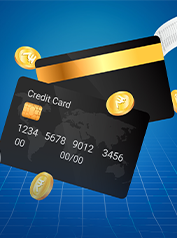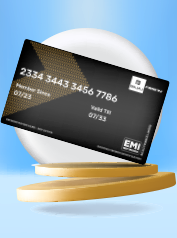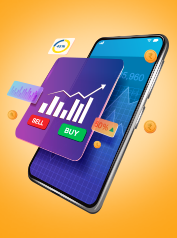
NACH mandate is a convenient solution for recurring payments by allowing you to automate them. As such, you need not worry about missing the deadlines whether for loan EMIs, utility bills or insurance premium payments. Established by the National Payments Corporation of India (NPCI), NACH, or the National Automated Clearing House, allows convenient and quick electronic transfers of funds.
It is a central system that helps strengthen the local and regional ECS (Electronic Clearing Service) systems that were previously used for bulk transactions. With NACH, banks across the country can carry out a large number of electronic fund transfers. As a bank account holder, you can authorise payments to be deducted directly from your account using the NACH e-mandate.
There are two types of NACH mandates that facilitate the electronic transfer of funds:
NACH Debit
NACH debit simplifies the payment collection of recurring financial obligations such as loan EMIs, utility bills, insurance premiums, PF contributions, etc. It automatically deducts payments through a large number of customers’ accounts. It also allows organisations to track these transactions easily through online channels.
NACH Credit
NACH credit allows businesses to make sizeable payments directly into the bank accounts of a large pool of beneficiaries. A unit controls the high-value transactions done through a single system. Corporates and other large organisations can leverage the NACH credit facility to distribute salaries, interest, etc.
e-NACH and e-mandate are simply services that aid both customers and merchants in handling recurring payments. While both deliver the same results, they are slightly different in their structure.
The e-NACH is facilitated by NPCI, which covers more than 40+ banks. On the other hand, e-mandates are managed by individual banks and are available for only a handful of them.
To opt for e-NACH, you need to fill up an online form on your bank’s website. It will go to NPCI via a sponsor bank and then get approved or rejected by the issuing bank. For an e-mandate, you can set it up directly by completing a one-time transaction for authorisation on the merchant’s website.
Now that you know the meaning of the NACH mandate and types, here are its objectives:
Create a centralised system for multiple ECS systems
Provide a technologically advanced platform to conduct a large number of recurring payments
Support Aadhaar-based and mobile-based ACH transactions
Reduce the risk of missed payments and the associated penalties
Regulate a smooth regulatory environment for institutions
Improve relationships with financial institutions
Here are the features and benefits associated with the NACH Mandate:
For Consumer |
For Organisations |
For Banks |
|---|---|---|
|
|
|
To avail of NACH services, follow these quick steps:
Visit the bank’s website and opt to fill out the NACH mandate form
Once you have filled in the details, you will get redirected to the destination bank’s website Here, you must authenticate your request using your net banking credentials
The bank would then verify the account number and decide whether to accept or reject it. If accepted, the mandate gets confirmed and future transactions can be scheduled. You would receive a reference number known as the UMRN.
ECS functions as a system that allows electronic credit and debit transactions from your account at regular intervals. While this may seem similar to the offerings of NACH, there are some major differences between the two:
NACH |
ECS |
|---|---|
NACH is an automated and web-based process |
ECS involves a manual process and, hence, takes time to settle a transaction |
You get a Unique Mandate Reference Number (UMRN) that can be used for future references |
ECS does not provide a reference number |
NACH has a very convenient application process and involves minimal paperwork |
ECS involves a significant amount of paperwork and has a high chance of rejection |
NACH payments are settled in a day |
ECS payments can take up to 4 days to settle |
NACH has a dedicated dispute management system |
ECS has no dedicated dispute management |
NACH registration gets confirmed by the end of the day |
ECS registration process can take anywhere between 25 and 30 days |
NACH’s full form in banking is National Automated Clearing House (NACH). The mandate facilitates the electronic, interbank transfer of funds, which are recurring in nature, without any manual intervention.
To check your NACH mandate status, sign in to your bank’s net banking portal or mobile banking app using your credentials. Then, on the home page, click on ‘Service Request’ to view your NACH status.
NACH payment refers to the automatic debit of funds from one bank account and credit to another without manual intervention. You can avail of the service by filling in the NACH mandate form.
Yes, the National Payments Corporation of India governs and facilitates the NACH mandate, and it is entirely safe.
NACH or National Automated Clearing House refers to the interbank transfer of funds electronically. Transactions made using NACH are recurring in nature.
UMRN stands for ‘Unique Mandate Reference Number’ and is associated with your NACH mandate creation. It is generated automatically by the NACH system when creating your mandate. You can use this to track your mandate details later and amend or cancel them.
To access the automatic, scheduled payment service offered by NACH, you need to fill up a form known as the NACH mandate form. By filling in the form and placing a request, you give the bank the right to debit your account periodically for a fixed tenor. The recipient account also reviews the NACH form and accepts the mandate to allow auto-debit of funds from your account.
All major banks in the country currently offer NACH as a payment service. This includes Axis Bank, HDFC Bank, Citibank, State Bank of India, ICICI Bank, RBL Bank, etc.
Certain NACH mandate charges are applicable on NACH transactions. For e-mandates, the processing fee is payable both by the sponsor bank as well as the destination bank. Also, the destination bank is expected to pay the penalty if the mandate is not processed within ten working days.
NACH mandate cancellation refers to the removal of the automatic debit instruction linked to your account. Such debit instructions could be related to utility bill payments, payment of insurance premiums, etc. Most banks offer the option to cancel the NACH mandate online.












